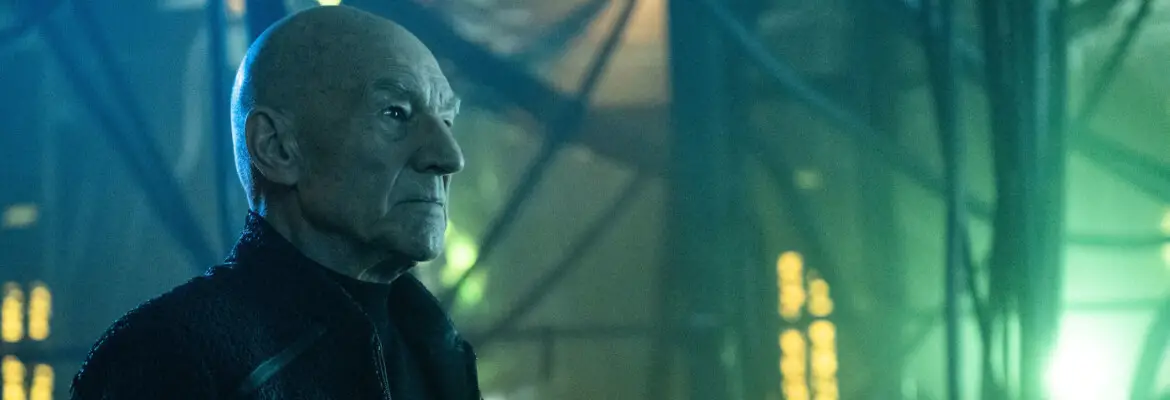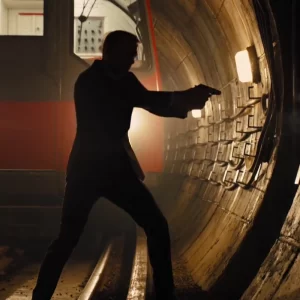Star Trek: Picard’s Homage to ‘Return of the Jedi’
After two middling seasons, Star Trek: Picard finally hit its stride in season 3. The final season was a fitting send-off and proved that Jean-Luc Picard (Patrick Stewart) works best when surrounded by the rest of the crew of the Enterprise. Indeed, the Enterprise D, lovingly restored by Geordi LaForge at Starfleet’s orbiting museum, is commandeered by the crew for a final mission: to rescue–or kill– Picard’s son, Jack Crusher (Ed Speleers) and sever his connection with the Borg Queen.
Jack, like his father before him, is now part of the Borg Queen’s collective. The Borg Queen renames Jack “Vox”, which is Latin for voice. In other words, he is now the voice of the Borg Collective. She uses Vox to assimilate the crew of every ship in Starfleet. Now, through Vox’s control, they prepare to destroy every major population center on Earth.
The stage is set for an explosive finale that ends not only Star Trek: Picard but also gives viewers a satisfactory ending to Star Trek: The Next Generation. And it does so by paying homage to the climax of Star Wars: Return of the Jedi.
Jack’s Borg “abilities” vs. the Dark Side of The Force
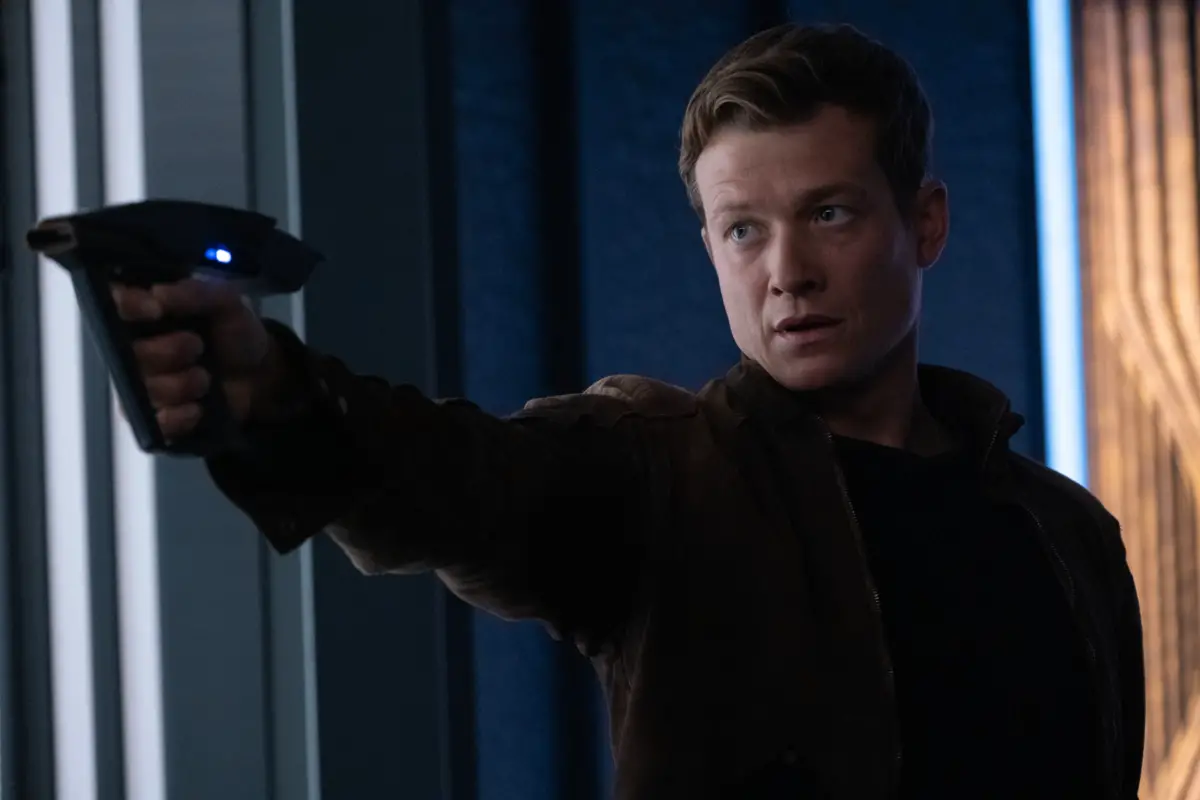
Image Source: MovieStillsDB.com
Jack inherited a “seed” from his father, Jean-Luc Picard. A seed that Jean-Luc picked up from his time as Locutus of Borg. That seed germinated into a power that Jack could use to control other humans and see through their eyes. This power parallels the Dark Side of the Force, especially when father must confront son and bring him back to his human self.
Jack (“Vox”) Crusher and Jean-Luc Picard vs. Darth Vader and Luke Skywalker
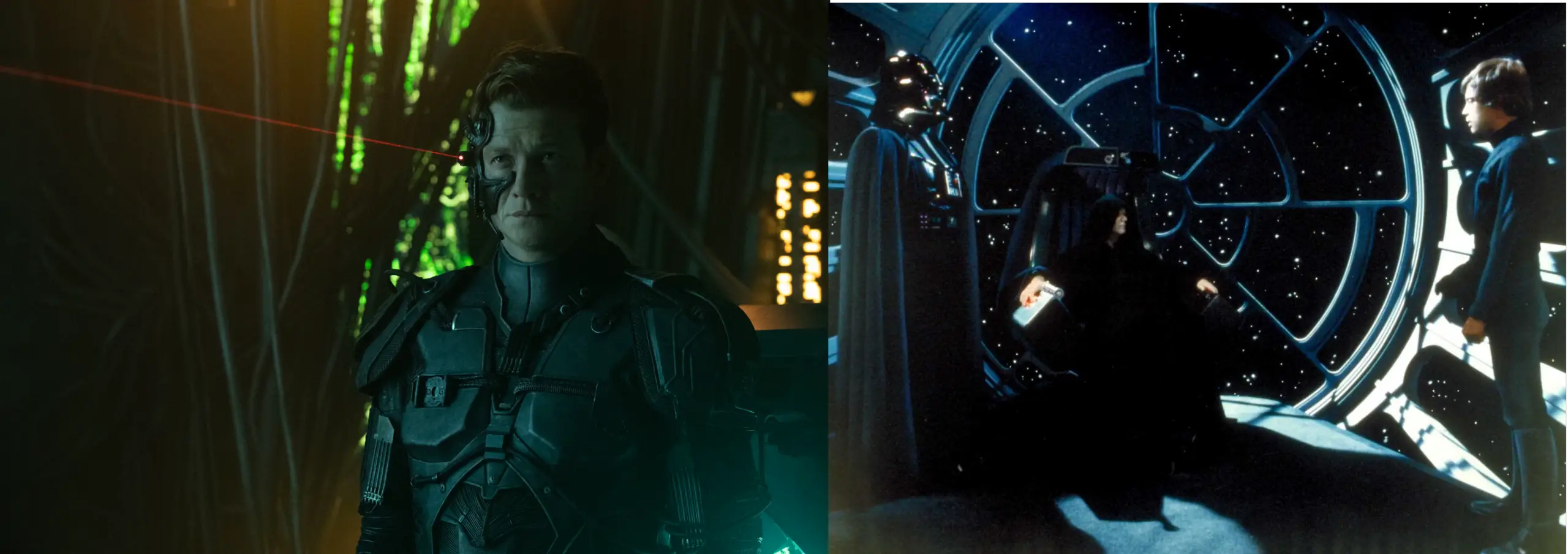
Image Source: MovieStillsDB.com
The relationship between father and son in Star Trek: Picard is a flip on the relationship between Luke Skywalker and his father, Darth Vader. On the Death Star, Luke reluctantly fights his father, all the while trying to coax the good out of him and turn him back to the light side of the Force. Vader might be “more machine than Man”, but the bond between father and son proves too great. Emperor Palpatine’s violent attack on Luke forces Vader to turn on his dark master and hurl him down a reactor shaft. Vader is brought back to the light. And moments later Luke removes his mask to reveal the aged face of Anakin Skywalker, his true self.
The relationship between father and son plays out in reverse in Star Trek: Picard‘s final episode. Picard’s son, Jack, takes on the role assigned to the father, Vader, in ROTJ. Picard tries to coax his son from the clutches of the Borg Collective, just as Luke tries to pull back Vader from the Dark Side.
The Borg Queen vs. Emperor Palpatine
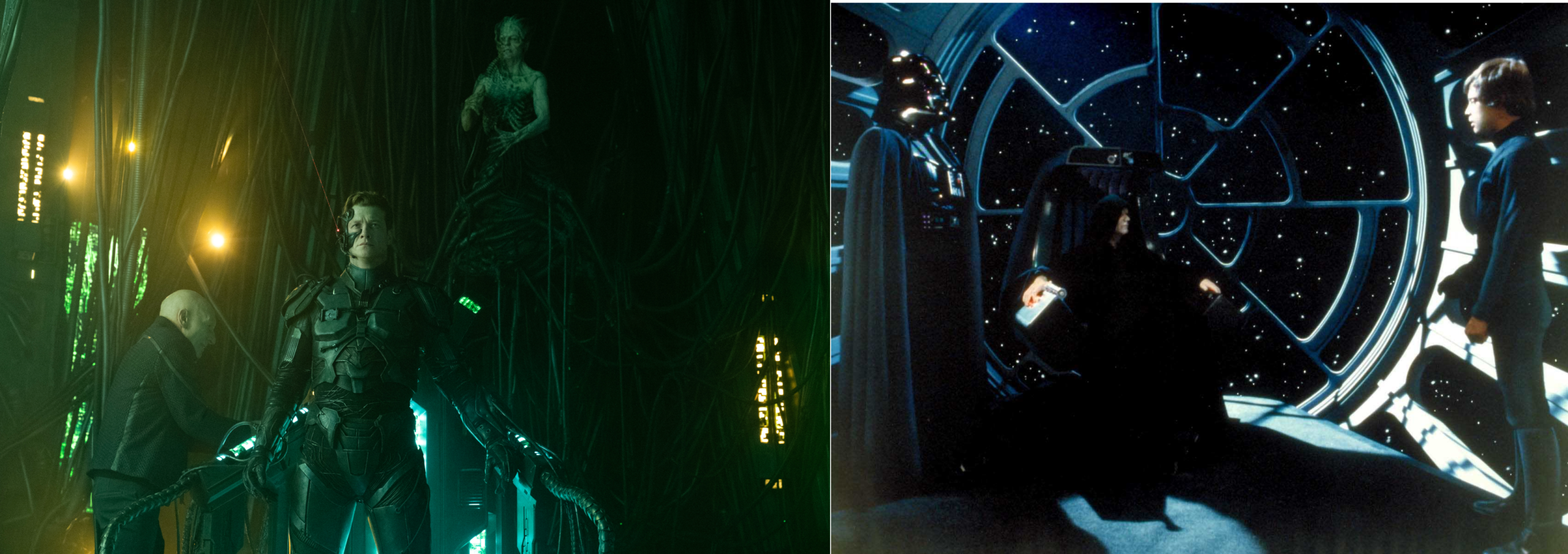
Image Source: MovieStillsDB.com
Jack, now fused into the mechanical parts of the Borg suit, stands below the Borg Queen, who is suspended in the corner of her throne room onboard her Borg ship. The sight recalls Vader standing next to the Emperor in the throne room during the climax of ROTJ. The Borg Queen continues to try and manipulate Jack to override his human side as Palpatine does to Luke.
Picard has to make a choice. Kill his son, or risk the lives of everyone on Earth by connecting to Jack and trying to convince him to reject the Borg. He chooses the latter. Ultimately, Picard gets through to Jack by telling him how much he loves his son, a sentiment that Jack wanted to hear from his father all along. Jack awakens from the collective. Like Anakin, he has returned to his true self, though he is the one who removes the machine parts from his body.
Enterprise D’s assault on the Borg Cube vs. the Millennium Falcon’s Destruction of the Death Star

Like ROTJ, this confrontation takes place while a space battle rages outside–though further away above Earth in Star Trek: Picard. What is strikingly similar is the relationship between the Enterprise D and the Borg Cube to the Millenium Falcon and the Death Star.
The Borg cube takes the place of the Death Star. The Enterprise follows a similar attack plan on the cube as the Millennium Falcon did on the Death Star. Just like the Falcon’s attack on the Death Star, the Enterprise must fly through a narrow labyrinth inside the Borg cube to destroy a reactor that lies dead center. (It’s actually the beacon that Vox uses to transmit his control to the assimilated Starfleet crew. Nonetheless, it works like a reactor when its destruction causes the Borg cube to explode). However, Enterprise’s decision to destroy the cube with Picard and his son on it is a moral dilemma that Lando Calrissian does not share when destroying the Death Star with Luke still onboard.
When Picard and his son appear lost, Deanna Troi uses her telepathic abilities to discover their location. She beams the Away Team back to the Enterprise, leaving the Borg Queen to die in the cube’s explosion.
Enterprise makes a narrow escape by forcing its way out of the exploding cube.
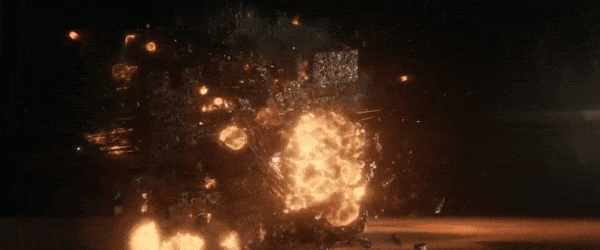
This recalls the Millennium Falcon’s acceleration out of the exploding Death Star in ROTJ.
The destruction of the Borg Queen and her cube has a finality to it that the end of the Emperor did 40 years ago in 1983–until Disney and J.J. Abrams decided to resurrect him in 2019’s Star Wars: The Rise of Skywalker.
The writers and producers behind Star Trek: Picard, no doubt aware of the 40-year anniversary of Return of the Jedi this year. Nonetheless, the homage to Return of the Jedi does not detract from the original storyline that gives the crew of Star Trek: The Next Generation the appropriate send-off it never did with its final–and disappointing–film Star Trek: Nemesis.

